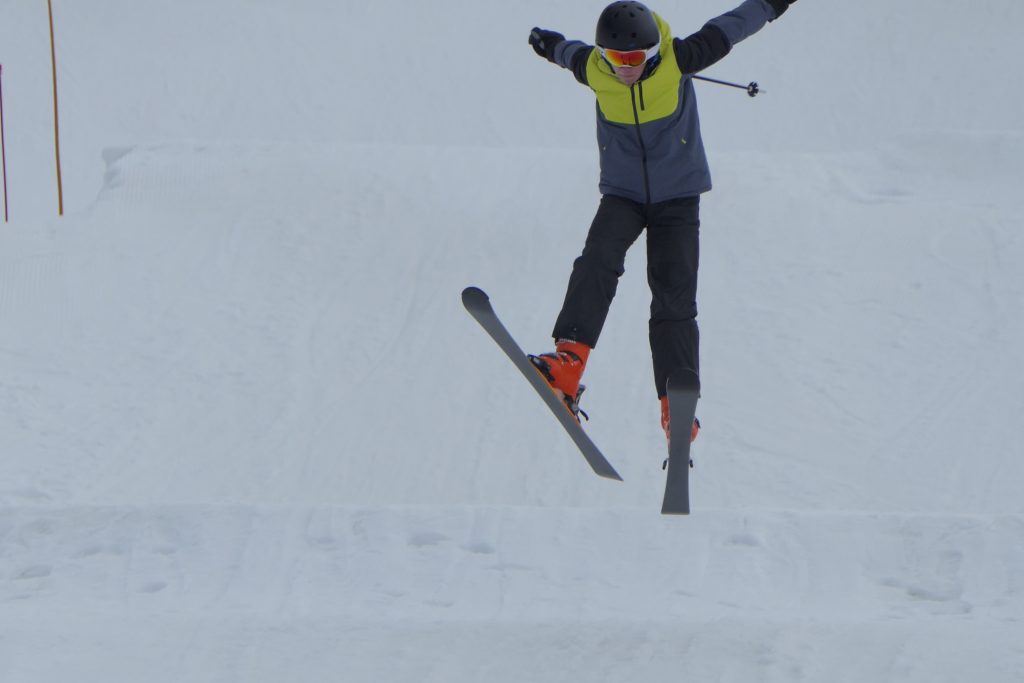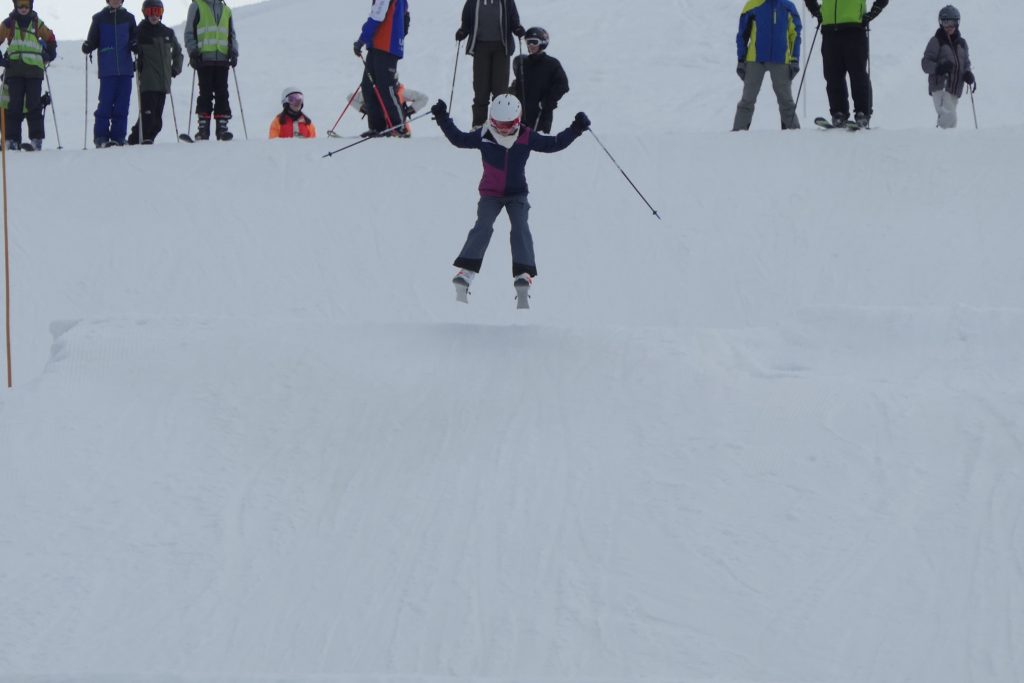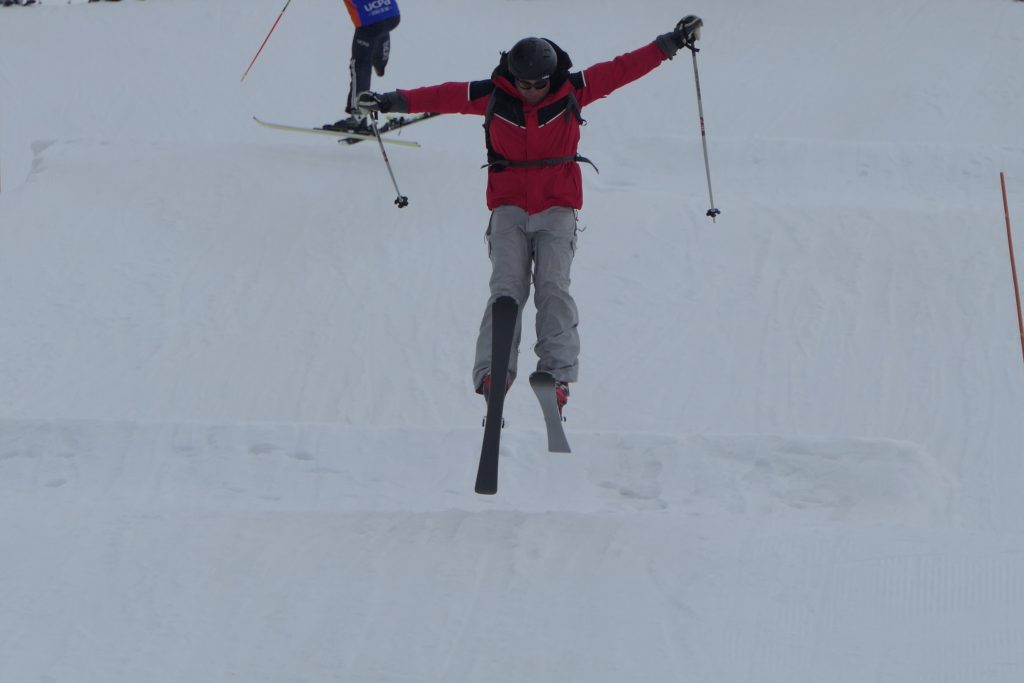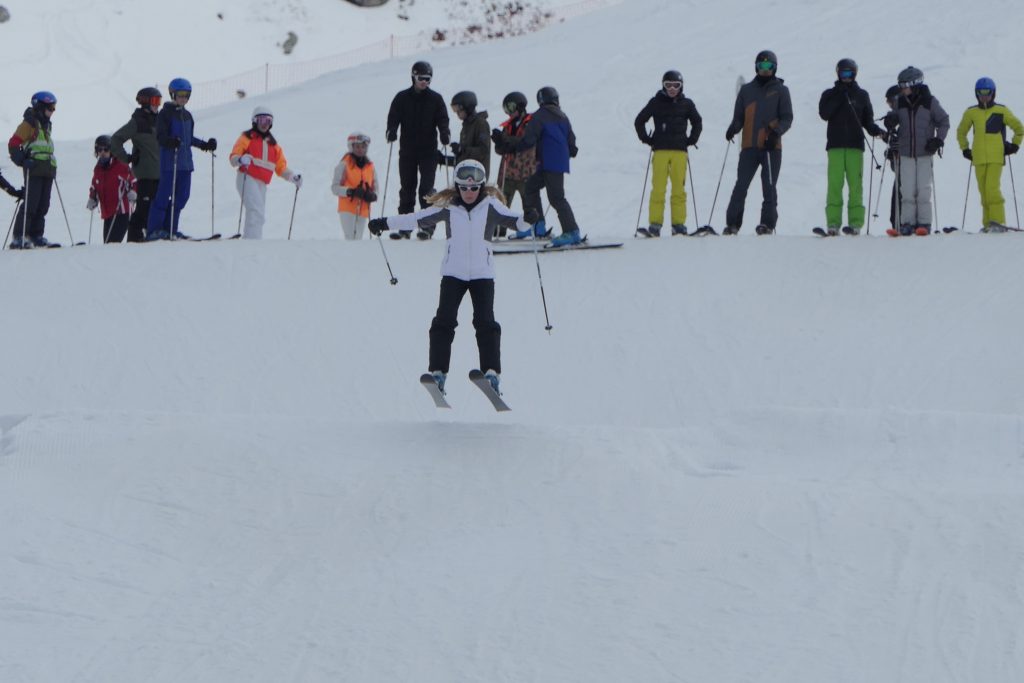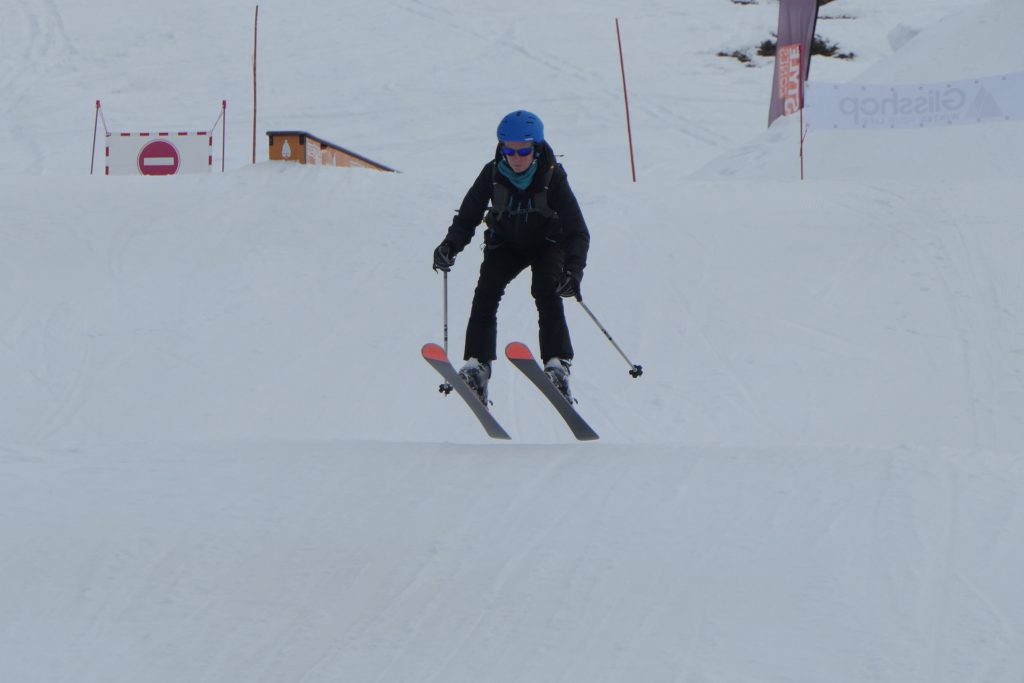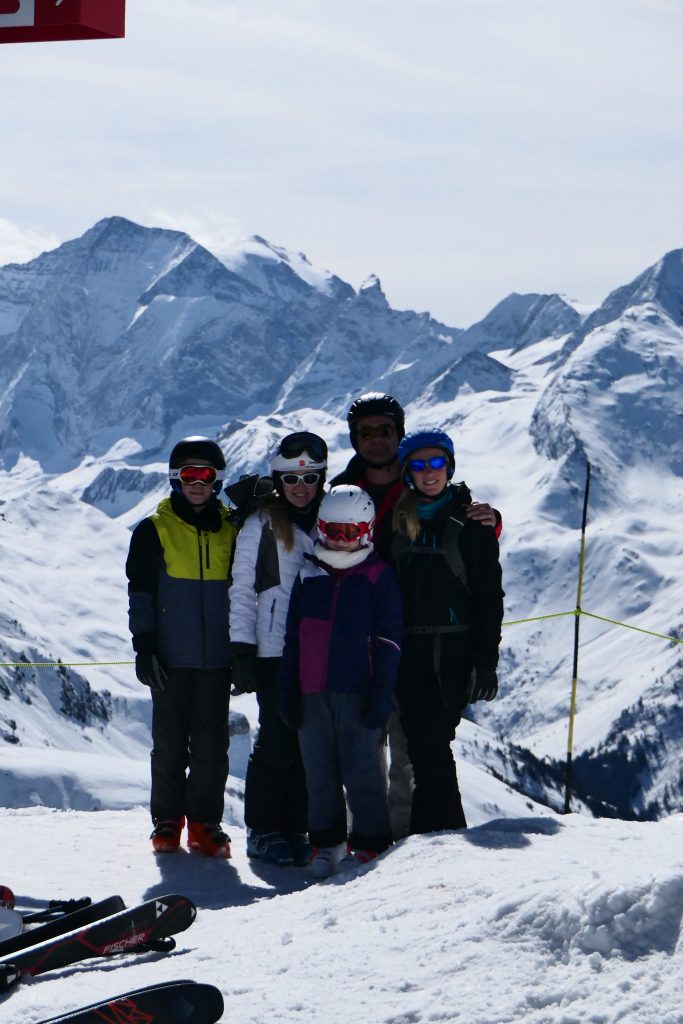In the video we are looking for the natural “down/up” rhythm of correct dynamics – both into and out of the turns.
We started the day with some skating – mainly for the purpose of helping Heidi to skate a little better and more easily. The target was to be able to use gravity for propulsion – even when skating uphill. The essence of this process is covered under at the following link: “Chiskiing“
Feedback
After a short ski on fairly steep terrain we had a feedback session where I observed each skier in turn and selected the most appropriate issue to be tackled:
Philippa: stemming the uphill ski and too much rotation
Holly: too much rotation
Heidi: stemming and leaning on the backs of the ski boots
Jonas: hands too low and rounded lower back
Toby: lack of early pressure in the turn (rushing the start of the turn)
Heidi, Philippa and Toby had to work on extending the uphill leg when on uphill edge – to engage early pressure and prevent stemming. Jonas had correct hand carriage explained to him and was given an exercise to do. Holly was warned not to just follow the skis with her body – even though dynamics was introduced as a lateral movement to the skis – you can still move laterally relative to the skis even if the body is not facing the direction of travel. (needs to face downhill – but mainly from the pelvis ie – turn your bottom up the hill)
Later on I spotted that Philippa was skiing with the correct down/up timing of dynamics – but interfering with this due to reaching forward with the arm to plant the pole when she should have been coming up out of the turn. Philippa was told to actively raise that arm high instead – the exact opposite – as an exercise to generate the right feeling of timing and remove the desire to stick the pole in the ground. This exercise for some odd reason also pulls the body correctly out of the existing turn and generates a secure feeling.
Fronts of Skis
We skied for a good period literally hanging in the fronts of the boots – to raise awareness of how the front of the ski grips and pushes you into a turn.
The tails do not skid out when hard on the fronts – that only happens due to rotation.
I demonstrated (static) how angulation permits hard pressure on the ski fronts without any risk of a face plant – because the angulation allows you to stay low and secure deeply inside the turn.
Pivot on Bumps
Bumps were used on the Bellecote glacier to show how with the ski tips in the air – centre of the ski perched on top of the bump – the skis swing into the turn with ease – following the centre of mass – then you side slip down the backside of the bump. This is one practical example of a pure pivot being used productively.
In a steep couloir you might have to jump to get the tips airborne and “short swing” them into the turn with the centre of mass – everything airborne.
End of Turn Dynamics
Our technical session was completed with working on developing the ability to use the downhill ski to actively lift the body up and out of the turn. This isn’t “centrifugal force” (which doesn’t exist anyway) it’s just that while the ski cuts beneath your centre of mass trajectory – you allow it to lift you up – hence you end up on the outside of this continuing turn. You have to come over the lower ski (we attempted “hanger turns” as an exercise) and then take over with the uphill ski by continuing to extend the uphill leg.
For tricky off piste this up motion on the downhill ski is essential. For hard piste and racing the early push from the uphill ski is more important. This all works more effectively if the skis are no more than hip width apart.
The energy of the up motion is used to link turns (avoid killing the energy with a traverse between turns) and a rhythm is encouraged.
